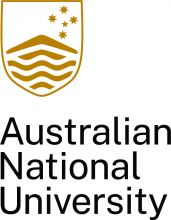Australia’s federal budget has delivered a nightmare scenario for universities, with the government forecasting that borders will remain all but closed until the second half of 2022 – at least nine months later than the October 2021 reopening predicted in last year’s delayed budget.
And spending estimates contain little provision for a looming demographic bulge in the university entry population, suggesting that a crash in international earnings could be exacerbated by a future shortfall in domestic funding.
Assumptions underlying this year’s budget have overshadowed the usual focus on spending promises. As expected, there was no repeat of last year’s surprise allocation of an extra A$1 billion (£550 million) in research funding.
Instead, doctoral training arrangements will be modified to generate extra funding of about A$30,000 for PhD students who undertake industry placements, through an additional weighting in the Research Training Program funding formula that will cost the government just A$1.1 million.
The budget also confirms pre-announced funding of A$54 million to help international education providers, particularly independent colleges. “Keeping our borders closed has been our best defence against Covid-19, but we realise the impact this has had on private providers,” said education minister Alan Tudge.
Another A$42 million has been allocated to scholarships for women studying science and engineering subjects, in a scheme co-funded by industry. Science and Technology Australia chief executive Misha Schubert said the new scholarships would “pave the way” for more female students.
The Academy of Technology and Engineering also welcomed this measure, but said the budget represented a “missed opportunity” to drive research and development in renewable energy. And the Regional Universities Network said its members had been “largely ignored”, with “calls for much-needed regional university infrastructure going unheeded”.
While the budget allocates A$348 million “to support regional Australia’s sustainability, resilience and job creation”, country-based universities appeared unlikely to qualify.
The Australian Academy of Science said the budget offered “mixed news”, with “no significant new funding for fundamental discovery science” and “no initiatives to stem the loss of university science jobs”. But it welcomed budget allocations of A$387 million towards the Square Kilometre Array telescope and an extra A$10 million for medical research.
Such figures pale in comparison to the expected losses from international education, with tens of thousands of foreign students now likely to switch to competitor countries whose borders are already open.
The budget papers say that “small phased programmes” for the entry of international students will start in late 2021 and gradually increase from 2022. But student arrivals will “continue to be constrained” by quarantine caps in 2021 and the first half of 2022, affecting passengers other than those from unspecified “safe travel zones”. To date, Australia has only opened its borders to neighbouring New Zealand.
Universities Australia said the border closure assumptions posed “very serious challenges” for its members. “Governments across all jurisdictions need to come together with universities to develop a robust plan for the safe return of international students,” said chief executive Catriona Jackson.
She said the sector had taken a A$1.8 billion “revenue hit” last year from Covid and expected to lose another A$2 billion this year. “With borders shut until mid-2022, the picture for universities will get worse. Australia’s university sector cannot sustain these losses without serious damage to national productivity and the country’s knowledge base.”
Speaking ahead of the budget, Australian National University (ANU) vice-chancellor Brian Schmidt said last year’s financial turmoil – a “true decimation” that claimed 15 per cent of his institutional budget and one in 10 jobs – was a “harbinger of what’s to come in the rest of the sector”.
Professor Schmidt said ANU had unilaterally decided to stop increasing its student population back in 2018. “If we have a prolonged closure of the border, our numbers are going to get worse and [other universities] are going to catch up with us,” he told the ABC. “Our [overseas] agents are telling us…that students are preferencing places that are open, even with Covid running rampant.
“The world has changed post-Covid, and Australia has yet to articulate what it wants out of its higher education system going forward. We effectively have the same system in place as in 2019, with almost no support having come into it over the pandemic and no clear road map for the future.”
The budget papers forecast spending of less than A$7.3 billion on university teaching grants in 2024-25 – almost 4 per cent less than in the current financial year – even though around 14 per cent more Australian-born people are expected to reach university entry age by then, thanks to a “baby boom” fostered by then treasurer Peter Costello in the early 2000s.
ANU higher education policy expert Andrew Norton said planned spending on the Commonwealth Grant Scheme in 2024-25 was “little changed” on the preceding year. “With the Costello baby boom cohort looking for a university place in the mid-2020s, it is not clear how well the higher education system will be able to meet their needs.”
Professor Norton said no higher education budget items appeared to be keeping pace with inflation, apart from the rising cost of writing off student debts. “With more than a year to go before [substantial] numbers of international students are likely to arrive, another significant round of job losses in universities seems likely.”
Register to continue
Why register?
- Registration is free and only takes a moment
- Once registered, you can read 3 articles a month
- Sign up for our newsletter
Subscribe
Or subscribe for unlimited access to:
- Unlimited access to news, views, insights & reviews
- Digital editions
- Digital access to THE’s university and college rankings analysis
Already registered or a current subscriber? Login










